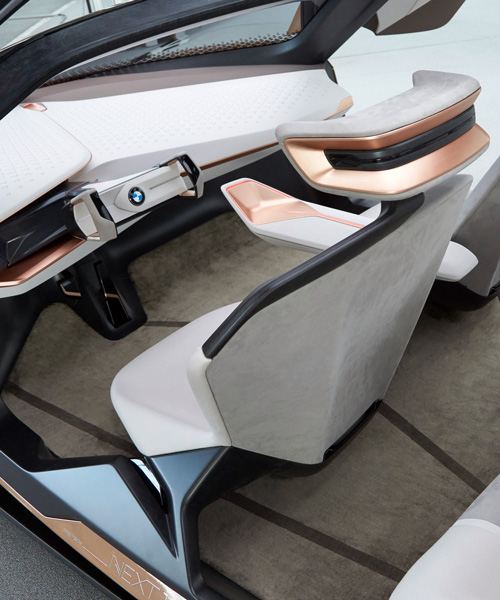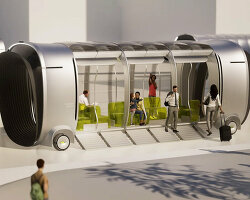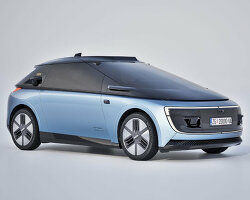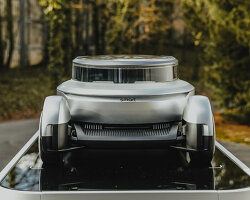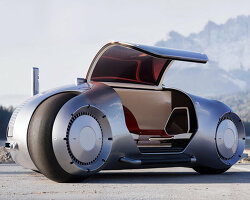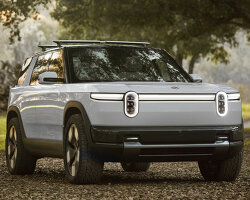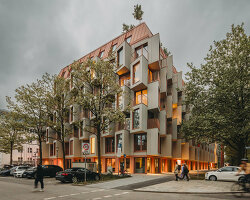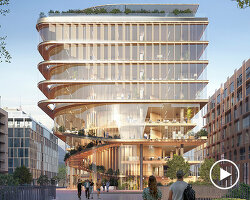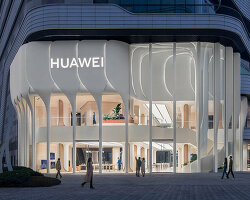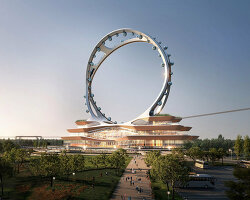how does technology influence the automotive industry and what will be its impact on the urban landscape? will cars be autonomous in 20 years from now, or will they transform into mobile, multi-purpose rooms catering to our wellness and productivity needs? these were some of the questions ren yee, head of innovation strategy & forecasting at UNSense and UNStudio, martina starke, head of BMW brand vision and design, and patricia urquiola were called to discuss during the BMW roundtable, taking place at urquiola’s milan studio. hosted by joseph grima, architect and artistic director at design academy eindhoven, the conversation revolved around new technologies, changing human being desires and lifestyles, and what the future requirements of mobility interiors will be according to those.
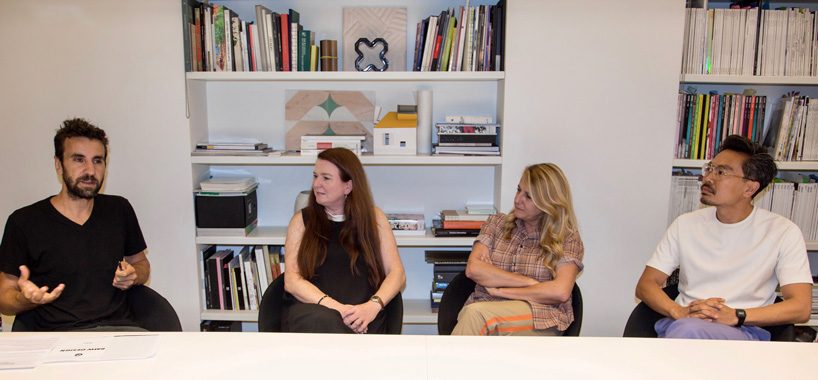
from left to right; joseph grima, martina starke, patricia urquiola, ren yee
all images courtesy of BMW
with human experience as a central axis of the discussion, participants speculated on how our relationship with cars might evolve in the coming years. ‘I believe it will become both a multi-purpose room and a very specific room,’ mentions ren yee while discussing how a car may look in the future. given the possibility to attach certain add-ons, or alter its interior to allow various forms of activity to take place, the car might be able to transform from a workout space to a mobile office, and anything in between. in reference to becoming a ‘very specific room,’ yee explains that ‘genomics are able to read your DNA, understand your specific needs and provide a service only for you – so in this case it becomes very specific because it tailors to you.’ examples of that might include measurements of how much oxygen the user needs, or how much light. ‘it’s not that complex for it to happen, the issue is about data privacy, it is whether I want this information to be given from a sensor of a room to a sensor of a car provider,’ yee concludes, ‘technology-wise we can do it; do we want that — is another discussion.’
innovative materials and technologies are entering the automotive industry, making vehicles adaptive to their users’ needs. ‘I think many of the props that we use for living are going to have a bit of smart technology embedded on them that will be adaptive to us,’ notes patricia urquiola, while in practice, martina starke explains that, ‘new technologies and new materials are coming into the car industry, like 3D-printing for example, this is what we are doing a research on with MIT.’
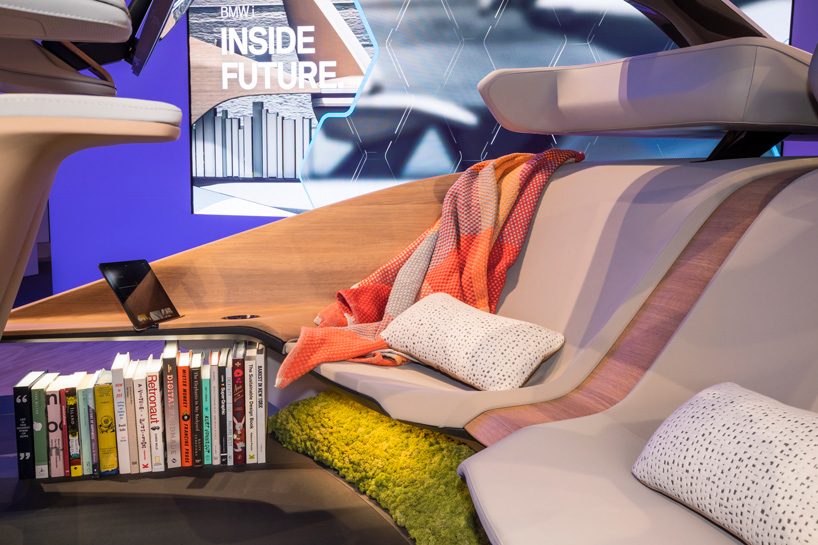
another change that may occur is in the sense of ownership, with an upcoming transition from private property to peer-to-peer service and connectivity. ‘we are thinking a lot about on-demand mobility, it’s not only about owning your car, it’s also about sharing cars,’ starke notes, with urquiola agreeing that ‘the sense of property is going to change; bad news possibly, because people are going to buy less personal cars.’ ‘I think the new generations are relating to cars in a very different way,’ yee points out. ‘we like the ownership of a certain car and the association to a certain car, but the generation today looks at cars as a functional object; the idea of this detachment is quite interesting, you move from an object’s interior to a service.’
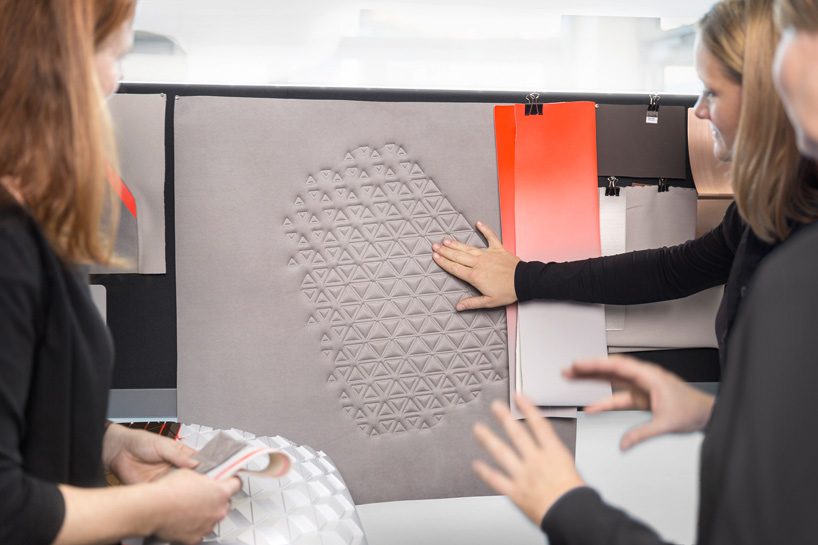
probably the most radical shift however, that is bound to occur in the coming years, is that of self-driving cars. ‘we created a vision car with different modes, the ease and the boost mode,’ explains starke, ‘the car still has a steering wheel, so you have the possibility to drive yourself in the boost mode, but you also have the possibility to use the ease mode where you can adjust your sitting position, make yourself comfortable, or speak with your neighbor – I think for the future, when we come into the step of real autonomous driving, where you won’t need a driver anymore, it’s going to be about what you are doing in this interior.’
transformations in automotive technology are bound to have a large impact on the visible landscape of the city as well, including for example, ‘signage, which tells you the speed limits – all of these things can essentially be done away with because they are completely superfluous to a machine that can have all of that embedded, but it’s never going to disobey the rules anyway,’ as grima points out. ‘the human-centric is a positive direction cities are heading to,’ mentions ren yee, ‘they are talking about giving back to the public, so when autonomous vehicles come – and I do believe that autonomous vehicles are coming because all the money from all the powerful companies are on it – what will happen is cities will start to provide more spaces for the public. car lanes, which have always been a scar in the urban fabric, will be reduced significantly, and there will also be a smarter way of re-routing the movement of cars within cities,’ the UNSense and UNStudio head of innovation strategy & forecasting continued. one key presence experimenting with the physical realm of spatial urban planning is google and its sidewalk labs branch, with one recent example being the collaboration with carlo ratti associati on a modular paving system. ‘one of the proposals that we saw from them is a car that would come to the city, where all the public realm is a park, and there will be interaction between the car and the people in a very intuitive way using lights and sound,’ yee added, ‘the cars will approach and they will know there is a kid playing around the corner, and parents, aware of that, will feel safe that kids can run around the city, because the car also “talks” to the infrastructure and buildings.’
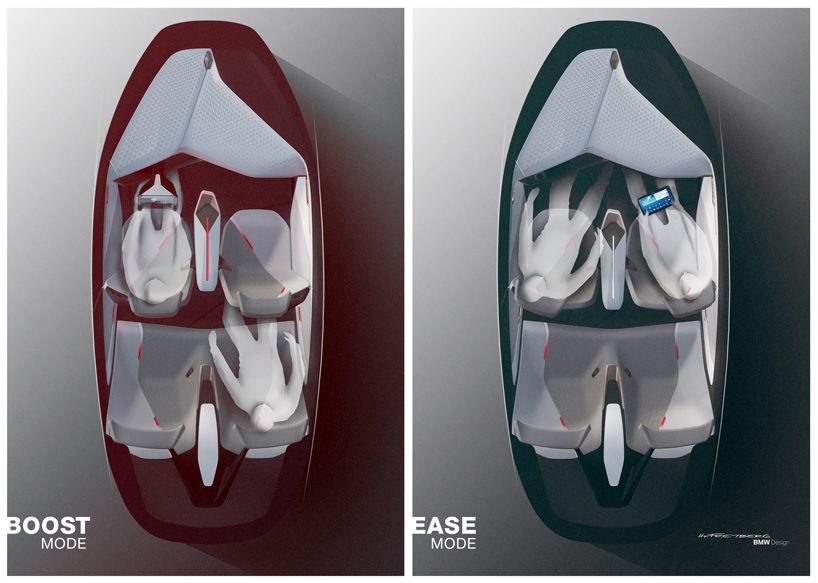
considering the fast-paced development of AI – also responsible for the rise of self-driving car – non-anthropocentric scenarios for the future of the automotive industry are equally possible, if not inevitable. ‘a swiss economist or engineer, who worked for google for a while, came to mind — he developed a hypothesis in which he predicted that the future of companies like google is radical decentralization, not in the sense that there will be simply some peer-to-peer service, but that the future of the automobile is essentially a self-owning company,’ mentions joseph grima, ‘his idea was that automobiles would essentially own themselves and would run themselves as businesses; they would give you a ride and take you to a certain place and they’d have to calibrate the cost per mile in terms of a competitor market, where there are many other cars trying to sell this service, and they’d also have to think about how they’re going to reinvest, do they upgrade to BMW or do they make it a little cheaper, how much to invest in maintenance, and so on.’ in all its bizarreness, a future considering other entities equally inhabiting the urban landscape could possibly bring about a more democratic way of being in the city – one that does not put the human in the center of its operations.
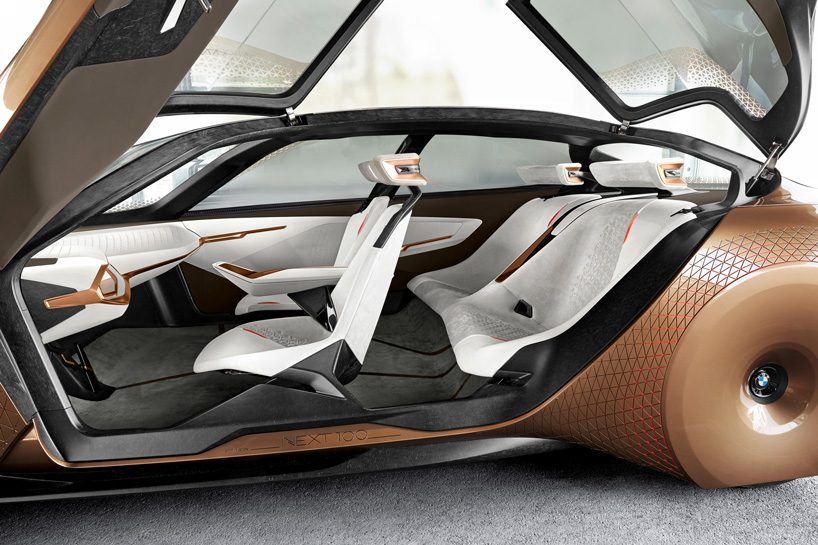
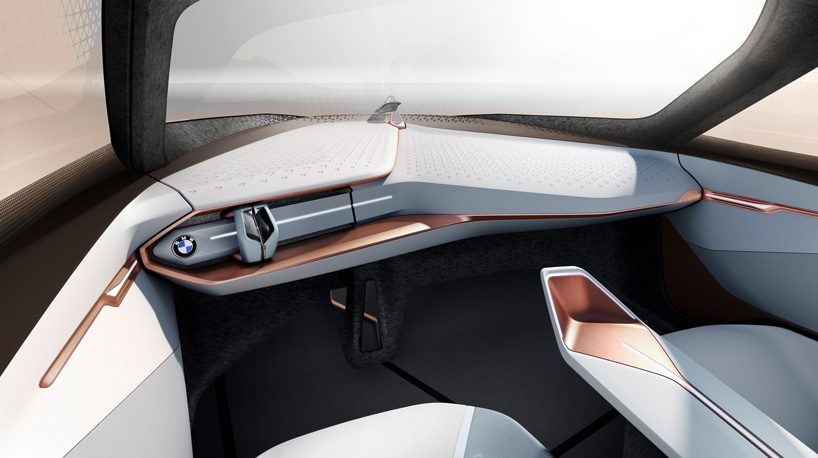
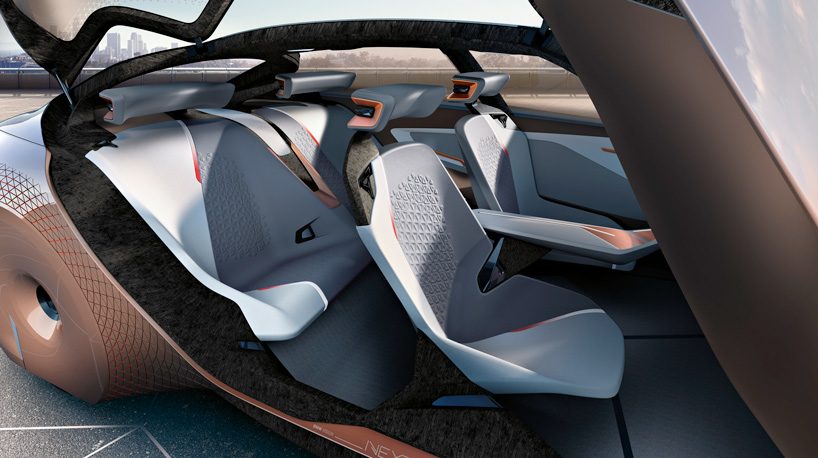
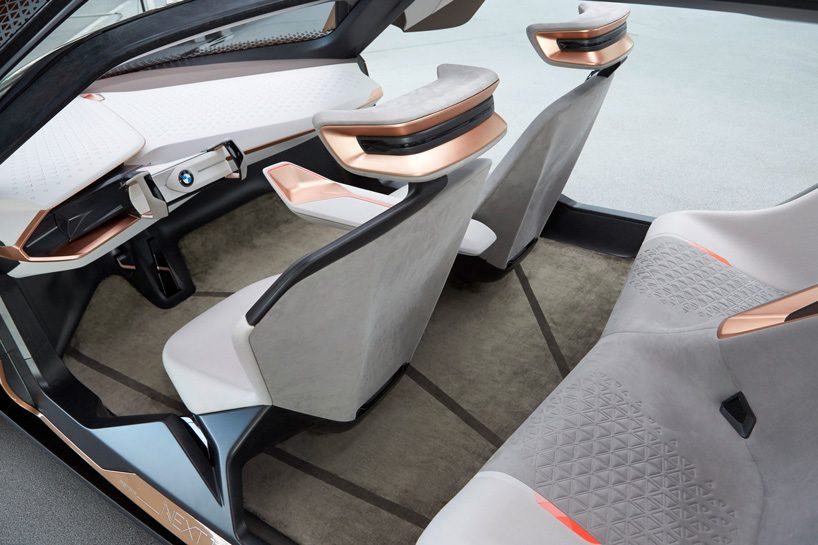
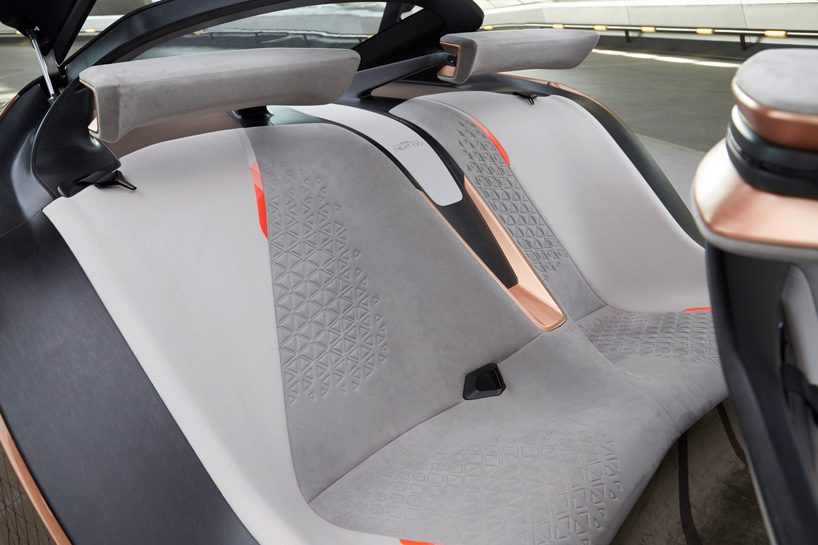
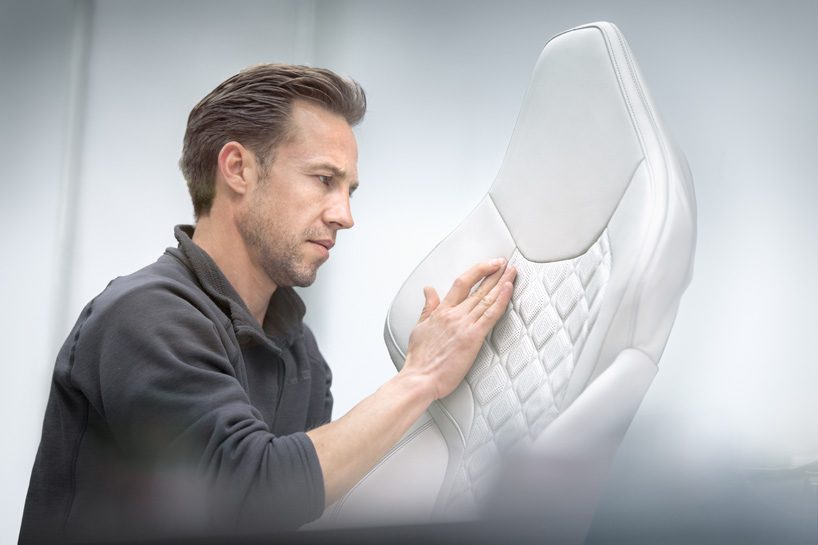
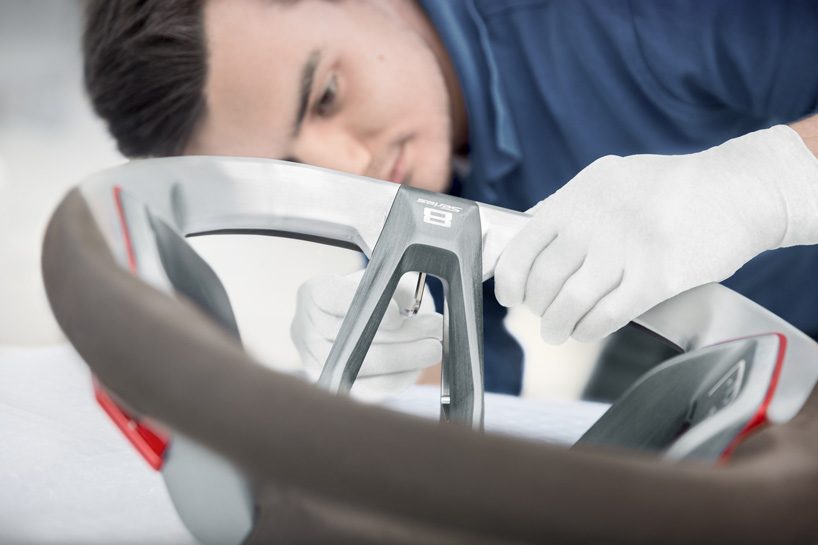
BMW (281)
driverless cars (162)
patricia urquiola (71)
UNStudio (119)
PRODUCT LIBRARY
a diverse digital database that acts as a valuable guide in gaining insight and information about a product directly from the manufacturer, and serves as a rich reference point in developing a project or scheme.
